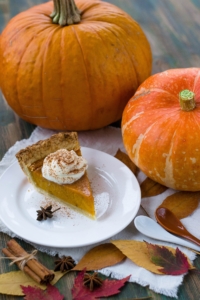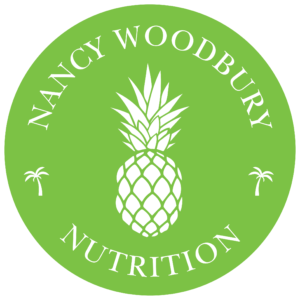
Eat healthy on Thanksgiving
Eat healthy on Thanksgiving Day and still have room for pumpkin pie! Thanksgiving is a holiday when we gather to give thanks and share a special meal of festive foods. But it’s easy to overeat when there’s so much food and the celebration lasts all day long.
Control food portions
Have you ever eaten so much that you actually felt sick? Limit your portions to avoid feeling stuffed after Thanksgiving dinner. Serve yourself 3-4 oz. of lean protein, two servings of non-starchy green vegetables (e.g. Brussels sprouts or green beans), and one or two ½ cup servings of healthy carbohydrates (e.g. sweet potatoes). Refrain from second helpings if you plan to eat dessert.
Train yourself to recognize your natural signals of hunger and fullness. Rate your hunger on a scale of 1 to 10, where 1 equates with feeling famished and 10 means you’re uncomfortably full. Eat slowly to fully savor the flavor of your favorite holiday foods. Periodically assess your hunger level as you eat and stop eating when you feel satisfied—not stuffed.
Ditch the dieting mentality and eat what you like without feeling obligated to taste every dish. The best way to eat healthy on Thanksgiving is to be mindful and indulge only in the foods that truly satisfy you.
Healthy food swaps that save calories
Pass on the bread basket: just one warm dinner roll, biscuit or piece of cornbread with a pat of butter will fill you up and add 250 calories to your meal.
Skip the 1950’s classic green bean casserole made with cream of mushroom soup topped with French fried onions, which together add 700 calories to the dish. Instead, steam fresh green beans and sprinkle slivered almonds on top.
Swap canned, candied yams and gooey marshmallows for a lighter version of sweet potato casserole. Peel and cube fresh sweet potatoes, toss with crushed pineapple, sprinkle walnut pieces and cinnamon on top and bake in a casserole dish until cooked.
To make a lighter dressing, saute carrots, celery, mushrooms and onions in vegetable broth instead of fat. Add the bread cubes and seasonings and cook it in a skillet.
Make fresh, whole cranberry relish with a small amount of maple syrup, cinnamon, cloves, orange juice and zest to avoid the added sugars in canned cranberry sauce, which contains 88 calories from high fructose corn syrup per ¼ cup serving.
Substitute turkey gravy, which is high in saturated fat and calories, for mushroom gravy prepared with vegetable stock. To save time, purchase vegan gravy, available during the holidays in both the frozen and prepared foods sections of Whole Foods Market.
Healthy holiday drinks and appetizers
If you’re spending time with others while Thanksgiving dinner is cooking, you might be tempted to nosh on appetizers all day. Swap fried foods, chips and heavy cream cheese dips for this plant-based cheese board filled with fresh vegetables, hummus, almond and cashew cheeses, whole grain crackers, flatbreads, olive loaf, fig spread, sliced apples and a bunch of grapes.
Studies show that the calories we drink aren’t as satiating as those we eat, so skip—or just take a sip—of sweet beverages like eggnog and hot chocolate that have between 200 and 350 calories per cup. For a lighter, yet festive, holiday beverage, try drinking spicy mulled apple cider served warm.
Drinking alcohol may increase cravings for high-fat, salty foods, so limit your intake to one glass of wine, which has 125 calories. Better yet, swap your cocktail for this pomegranate mint mocktail! Finally, drink plenty of water throughout the day to stay hydrated and flush out the excess sodium in all those holiday foods.
